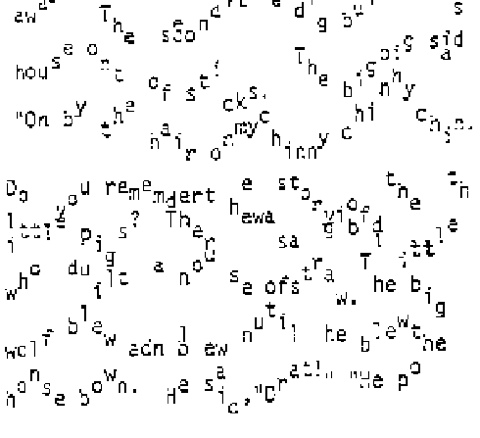
Eleanor Farquharson in her bifocals, with mum Emma and sister Isobel
For months on end, Emma and James Farquharson would approach the weekends with dread.
while most families look forward to the break, the Farquharsons knew they were heading for a by now familiar storm as their daughter Eleanor, then nine, would refuse to do her homework.
It did not matter what negotiations took place, or the lengths her parents went to, the outcome was always the same - uncharacteristic tears and tantrums, a very upset child and an absolute refusal to cooperate.
For Emma, 46, an interior designer, and James, 49, who runs an education business, it was both distressing and frustrating, as it was for Eleanor’s seven-year-old sister Isobel.
Little did they suspect that Eleanor, who had been diagnosed with severe astigmatism andgiven glasses at the age of five, was suffering from terrible problems focusing - literally.
‘We knew Eleanor was struggling with homework and to keep up in class, but we didn’t know how to help,’ says James.
‘We would read instructions in her homework book and make suggestions, but Eleanor would insist we were wrong.’
The school arranged special-needs one-to-one lessons for Eleanor but were equally confused why such a bright child was having difficulties. Her confidence suffered as she slipped behind the standards of her peers and Emma and James decided to consult an educational psychologist.
It was, for all, a revealing experience. When Eleanor was asked to do one particular comprehension test she froze and then became upset, which enabled the psychologist to experience some of the frustrations that had been going on at home.
Until then, no one quite knew if Eleanor had mild learning difficulties or if her symptoms were indicative of something else. There was even a worrying suggestion that she could be dyslexic.
‘The whole area is slightly grey,’ says Emma, ‘but the psychologist assured us she was not dyslexic.’
With dyslexia out of the question, they were no closer to finding an explanation, so a hearing test and a new eye examination were recommended.
the hearing test, at London’s Charing Cross Hospital, revealed perfect hearing, so Eleanor was referred to Ken Nischal, consultant paediatric ophthalmologist at Great Ormond Street Hospital.
Mr Nischal uses a technique called dynamic retinoscopy to measure the eye’s ability to look at a faraway object with detail in it, such as a cowboy cartoon, and then to refocus on an object close at hand.
What mr Nischal discovered was that while Eleanor could focus on objects at distance, she then struggled to switch to see items clearly close up.
‘It is as if the autofocus on your camera has gone a bit wonky,’ he explains.
‘A lot of children who are referred to me are described as “poor readers” or, “they don’t concentrate well”,’ he adds.
‘Sometimes these symptoms can be confused with dyslexia when, in fact, they are actually having a problem focusing.’
In the 12 years mr Nischal has been using dynamic retinoscopy - a test that takes just 20 minutes to complete - he has helped more than 100 children lose their diagnosis of dyslexia.
As Eleanor was already wearing glasses, she needed a solution that would correct her astigmatism as well as assist when focusing close up.
The answer came in the shape of a ?400 pair of virtually indestructible pink bifocal glasses, more commonly prescribed for older people, which have transformed school life for Eleanor - and her academic results.
‘Very few people ever think a child might have that problem,’ explains
Mr Nischal, ‘but bifocals, in a situation like this, are great for children.’
Eleanor explains: ‘The bottom half is like a giant magnifying glass. I use that to read things on my desk. the top half is so I can read things a long way away, like the whiteboard.’
And in the ten months since Eleanor has had her new glasses, her ability to switch between long and short-distance focusing has improved dramatically.
‘They are quite easy to use,’ Eleanor says, ‘and sometimes I forget I’m wearing them.’
As for Emma and James, some moments of tranquillity have returned to their Fulham home, particularly around weekend homework time. and a new event now occurs on a regular basis.
When mrs Farquharson goes upstairs to check on her daughter at night, more often than not she’ll see her face in the pillow, book to one side and glasses still on her face.
‘It is,’ she says, ‘a huge pleasure.’
Mr Nischal: eyedoc.org.uk
- Newborn babies are tested for eye conditions such as cataracts, corneal abnormalities and glaucoma. Their eyes are tested again at eight months and three years of age as part of a general health check and, in most areas of the UK, when they are four or five before they start school.
- NHS eye tests are available free to anyone aged 18 or under and in full-time education. It is advisable to have a sight test every two years.
- Regular headaches, sitting very close to watch the TV, not making eye contact, eye poking and rubbing, poor attention at school and reading difficulties are all signs that a child may be struggling to see.